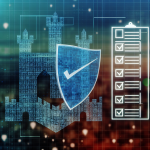
Top Security Compliance Checklists: What Every Business Should Know
July 6, 2025
Building a Strong Defense: The Role of Compliance in Cybersecurity
July 7, 2025
As organizations continue to embrace cloud computing, the need for robust security measures becomes increasingly critical. The cloud offers flexibility, scalability, and cost savings, but it also presents unique security challenges. This article explores the technologies and trends influencing cloud security, providing organizations with insights to protect their data effectively.
The Cloud Security Landscape
Understanding Cloud Security Risk
Cloud environments introduce various security risks, including data breaches, unauthorized access, and compliance violations. According to a 2022 study by McAfee, 52% of organizations experienced a cloud security incident in the past year. Understanding the landscape and recognizing these risks is the first step in mitigating them.
Shared Responsibility Model
One of the foundational concepts in cloud security is the shared responsibility model. In this framework, cloud service providers (CSPs) and customers share the responsibility for security. While CSPs secure the underlying infrastructure, customers must manage security for applications and data they deploy. This model emphasizes the need for organizations to remain vigilant in safeguarding their data.
Key Technologies Securing the Cloud
1. Identity and Access Management (IAM)
IAM solutions are integral for controlling who has access to cloud resources. Tools such as multi-factor authentication, single sign-on, and role-based access control help organizations enforce security policies. By ensuring that only authorized users can access sensitive data, IAM reduces the risk of unauthorized access and insider threats.
2. Encryption
Encryption transforms data into an unreadable format that only authorized users can decrypt. Organizations should implement encryption both at rest and in transit to protect sensitive information. While many cloud providers offer built-in encryption, organizations can also choose to manage their encryption keys to enhance security further.
3. Security Information and Event Management (SIEM)
SIEM tools aggregate and analyze security logs from various sources, providing real-time visibility into cloud activities. By employing advanced analytics and machine learning, SIEM solutions can detect anomalies and potential threats, enabling organizations to respond swiftly to incidents.
4. Cloud Security Posture Management (CSPM)
CSPM tools automate the assessment of cloud security configurations against best practices and compliance standards. By identifying misconfigurations, CSPM helps organizations maintain a secure environment and reduce vulnerabilities. Regular assessments ensure adherence to compliance requirements, such as GDPR or HIPAA.
5. Zero Trust Architecture
The Zero Trust model operates on the principle that no one—whether inside or outside the organization—should be trusted by default. Implementing this model involves continuously verifying user identities, enforcing least privilege access, and monitoring all interactions with cloud resources. This shift from traditional perimeter-based security to a more granular approach is gaining traction as organizations prioritize data protection.
Emerging Trends in Cloud Security
1. Integration of Artificial Intelligence and Machine Learning
AI and machine learning are increasingly being integrated into cloud security tools. These technologies can enhance threat detection capabilities by analyzing large sets of data to identify patterns indicative of malicious behavior. Automated responses powered by AI can also streamline incident response processes, enabling organizations to act swiftly in the face of threats.
2. Shift to Multi-Cloud and Hybrid Cloud Environments
Many organizations are adopting multi-cloud and hybrid cloud strategies to enhance flexibility and redundancy. However, this complexity introduces new security challenges. As organizations deploy resources across multiple environments, managing security consistently becomes essential. Implementing unified security strategies that span all environments is crucial for protecting data throughout its lifecycle.
3. Compliance and Regulatory Requirements
As governments and regulatory bodies tighten compliance requirements, organizations must adapt their cloud security strategies accordingly. Keeping abreast of regulations like the California Consumer Privacy Act (CCPA) and General Data Protection Regulation (GDPR) ensures organizations maintain compliance and avoid potential penalties. Cloud security solutions increasingly offer compliance frameworks to assist organizations in meeting these obligations.
4. Remote Work and Cloud Security
The COVID-19 pandemic catalyzed a significant shift toward remote work, necessitating the need for enhanced cloud security. As employees access cloud resources from various locations and devices, organizations must enforce strong security protocols, including secure VPNs, endpoint security, and employee training on security best practices.
Conclusion
As cloud adoption continues to rise, so does the importance of robust cloud security measures. Organizations must leverage advanced technologies and stay current with emerging trends to establish a secure cloud environment. By understanding the shared responsibility model, investing in key security technologies, and adapting to ongoing changes in the threat landscape, businesses can confidently embrace the cloud while safeguarding their critical assets. Cloud security is not just a technology challenge; it is a strategic imperative that empowers organizational resilience in an increasingly digital world.







